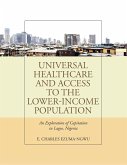Access Control has always been a tougher challenge in all organizations. There are restricted facilities therein that need to have authorized users access them. There is a great need for administrators to track who accessed what facility at what time so as to enable effective decision making for current and future use. In Higher Education Institutions (HEI)'s, authorized administrators and students need to know what facilities they are allowed to access from various points around the University premises. Fees payment was used as the controlling factor for students to access given restricted facilities. Apparently, with the client server system in place the same information can be accessed from separate check points to these facilities. The Magnetic Stripe card is the most widely used technology since it is inexpensive, easily manufactured, encoded and its ability to carry alphanumeric data which suits resource-constrained environments like Higher Education Institutions. Unstructured interviews and observations laid out the existing Access Control methods deployed at the restricted facilities of Mbarara University of Science and Technology.
Hinweis: Dieser Artikel kann nur an eine deutsche Lieferadresse ausgeliefert werden.
Hinweis: Dieser Artikel kann nur an eine deutsche Lieferadresse ausgeliefert werden.








